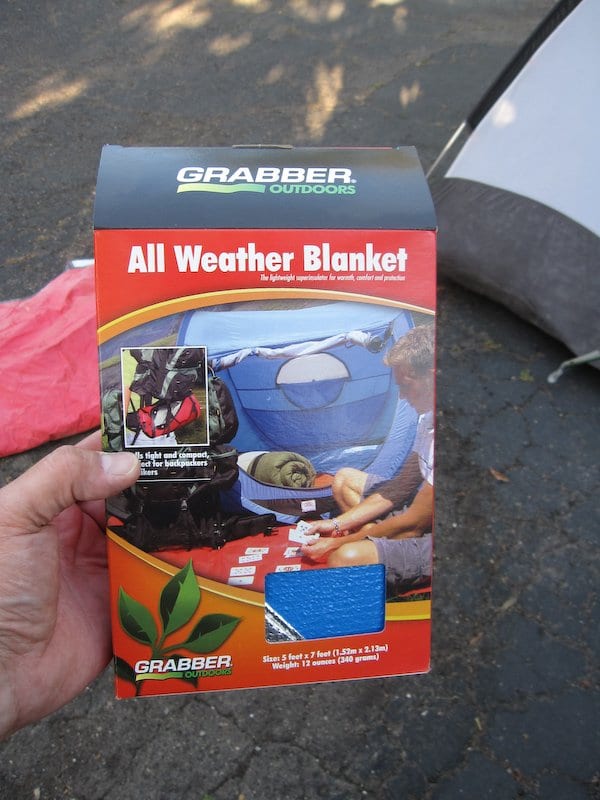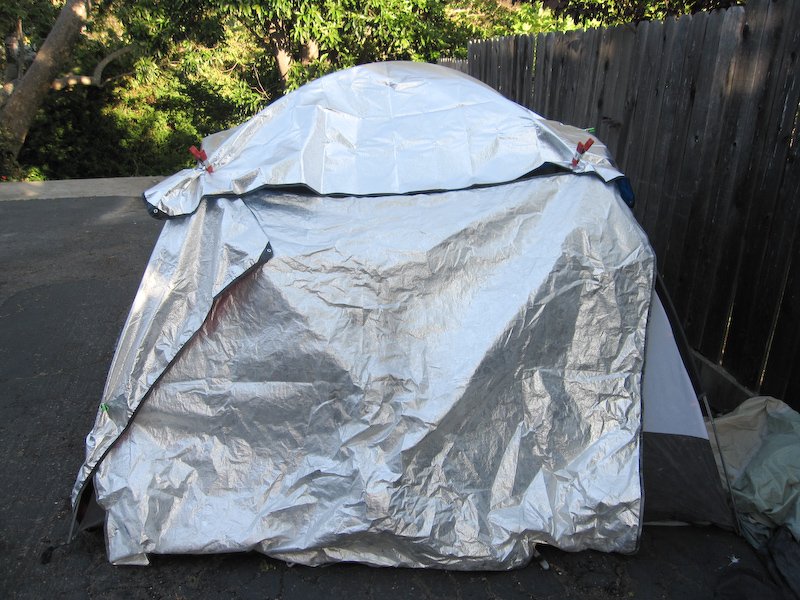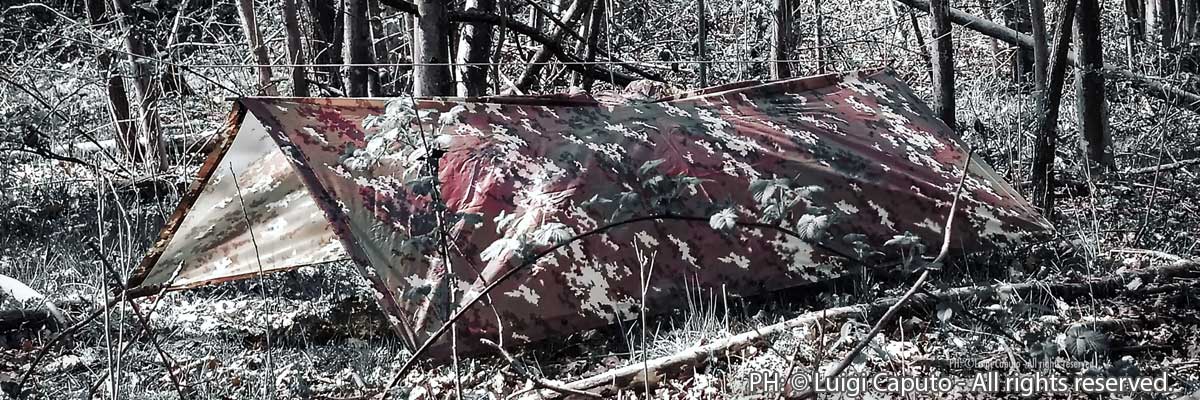Humans emit the same amount of energy as a 100-watt light bulb, radiating body heat in the same way that bulbs convert energy to heat. That body heat works as a natural insulator and if we were to lay inside a small enclosed plastic bubble, it would be enough to keep us warm – even in winter.
However, it’s almost impossible to not touch things, which makes cold-weather camping tricky. A tent can act as that protective bubble, but it must be properly insulated.
What exactly is hypothermia?
Before we get into the specifics of insulating your tent, it’s important to have a solid understanding of what hypothermia is. By definition, hypothermia occurs when the body loses heat faster than it can produce it, resulting in dangerously low core body temperature. While 98.6 degrees Fahrenheit, or 37 degrees Celsius, is a normal body temperature, hypothermia begins to set in when that core body temperature reaches 95 degrees Fahrenheit, or 35 degrees Celsius.
When body temperature drops, the heart cannot work properly, which leads to a domino effect of core functions shutting down. As blood flow to major organs – including the brain – decreases, the body goes into shock. The nervous system begins to fail, followed by the liver and kidney. If left untreated, the respiratory system soon fails as well, which could result in unconsciousness or death.
How do you get hypothermia?
As explained on PBS’ It’s Okay to be Smart, what we’re actually experiencing when we feel cold is matter, or energy, flowing between different temperatures. Cold doesn’t have the ability to move into something; rather, heat moves out. This has to do with the way energy is transferred, and there are four ways it can happen: conduction, convection, radiation, and evaporation. The one that most affects our body heat is conduction, defined as the transfer of heat between solid objects.
Through conduction, we lose body heat when we make physical contact with things that are colder than we are. Although it feels like that object’s cold is being transferred to us, what’s actually happening is the warmth of our body heat is being conducted to its cold surface, effectively reducing our body temperature. Here’s a perfect real-world example: Think about holding a chocolate chip cookie for several minutes. As your body heat is transferred to the cookie, the chocolate chips begin to melt. In terms of tent camping, another example is when you sleep on the ground. Because it’s colder than your body temperature, the ground conducts your body heat away from you.
Like we mentioned earlier, you can experience hypothermia in cool – not necessarily freezing cold – temperatures, and water and wind both exacerbate it. Michael Sawka of the USARIEM states that people lose their body heat about 25% faster in water than in air. That’s because water is denser than air, allowing it to absorb significantly more heat, faster. It’s important to realize, however, that “water” doesn’t refer to only physical bodies of water. Rain, sweat, and even damp clothing can also substantially increase the risk of hypothermia. This is precisely why it’s so important to have a properly insulated tent that will keep you both warm and dry.
The best survival insulation materials
If you’re totally unfamiliar with any type of insulation, you may be surprised to learn that the best insulators are the lightest materials, not the thickest or heaviest. Think back to what we learned about heat conduction: fewer solid objects around us mean there are fewer things that can draw our body heat away from us. You don’t want to sleep on top of a heavy blanket for camping, but rather the complete opposite – you want something as light as literal air. The blanket, which is physically much denser, transfers heat easily, while the lighter material, with far fewer molecules, does not.
Our favorite tent insulation materials are all-weather blankets, which truthfully are more like tarps. Note how thin and light they are (just 12 ounces!), yet they are highly effective insulators. As you’ll see below, these multi-layered, heavy-duty blankets can be used to insulate a tent in several ways. Plus, they have several other handy survival uses. If you’re interested in adding some of these to your gear arsenal, be sure to get a reinforced version and not a simple mylar one, as those are meant to be single-use only.

Insulating your tent from the cold
The idea behind insulating your tent is to trap body heat inside, rather than letting it escape through induction. If you effectively block the tent’s airflow with insulation and prevent external heat transfer, the warm air inside – your body heat – has nowhere to go. It’s forced to flow around you, insulating and therefore warming you.
Tents generally have very few surfaces, so luckily, insulating them is relatively simple and straightforward. It’s worth mentioning that the smaller the tent, the easier it is to insulate. Spacious multi-room tents may be tempting, but trust us – only buy as big of a tent as you truly need. More open space = more areas for cold air to collect and linger.
How to insulate tent walls and roof
A tent’s roof is undoubtedly the most difficult part to insulate, but it’s important to not skip this step. Nearly all 3-season tents have a rainfly with a ventilated roof and the laws of physics have taught us that hot air rises. That means the heat you’re trying to keep in will simply rise and escape right out the tent roof if it’s not properly insulated.
- Cover the inside of your tent using all-weather blankets or sheets of reflective foam insulation, making sure to face the reflective side inwards (toward you). Purchase some basic clamps from a hardware or home improvement store to fasten the blankets. While this is a highly effective insulation method, keep in mind that you will need to put them up and remove them every time you camp.
- Alternatively, cover the exterior of your tent with the insulation, again facing the reflective side down to retain heat. Be sure to place the insulation between your tent roof and rainfly, not on top of the rainfly.
- Collect dried leaves and loosely pile them up around the entire outside of your tent, going several inches up the walls and covering any seams. You can also put leaves underneath the tent, to create an air pocket between it bottom and the ground. Be aware, however, that the leaves under the tent will get crushed and lose most of their insulation power, so it’s a good idea to replace those each day.
How to insulate tent floor
Pockets of cold air, or currents, are most likely to form in corners along the tent’s bottom. To reduce them, go several inches up the tent walls with your insulation instead of just insulating the floor.
- Use closed-cell foam sleeping pads, or pieces of insulation that are reflective on both sides, as your base floor layer inside the tent. The dual reflective surfaces bounce heat back to you, helping you retain it, plus reflect the ground’s colder air back down and away from you.
- Sleep on an air mattress. Remember, air is an excellent insulator, so a literal bed of it is a wonderful way to insulate yourself from the cold. However, air mattresses are bulky, can deflate, and take time to set up and put away, so foam sleeping pads are preferable.
Regardless of how you choose to insulate your tent, dressing appropriately is also crucial. Loose-fitting base layers made of wool or synthetic fibers are best, as they’re moisture-wicking and breathable but also help retain heat. Avoid tight-fitting clothing because it restricts blood flow. Cotton is also not a good choice because it absorbs moisture, which can leave you with damp clothing.
Insulating your tent from the heat
Insulating your tent primarily serves to keep you warm and dry. However, it’s just as important to keep the body cool and not overheat. Just like wanting to keep warm air inside the tent in cold weather, you’ll want to keep cool air inside it during the summer.
You can use one of the same methods we suggested for insulating the tent’s interior to keep it warm, only this strategy will be used on the exterior in order to keep the tent cool. Cover the outside of the tent with all-weather blankets or sheets of insulation, this time facing the reflective surface outward, toward the sun. This works in the exact same way as car window shades, bouncing the sun off rather than retaining its warmth.





